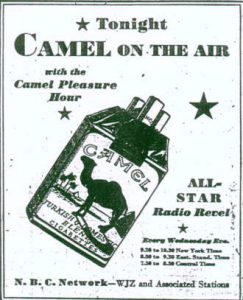
A time to mention, quite a time to live. We see, we illustrate, we experience, we relate, we leave it for later when we should probably jot a few things down first.
Via The Paris Review, Theodor Adorno speaking about the effects of televised music – From an interview in Der Spiegel (February 26, 1968).
SPIEGEL
The culinary element seems to us to be especially prominent in music broadcasts. A candlelit Karajan and Menuhin concert framed by the plush furnishings of a Viennese salon; Bach passions and cantatas in the obvious setting, a baroque church. As the distinguished vocal soloist is singing his part …
ADORNO
The listeners make furiously sorrowful faces …
SPIEGEL
… And the camera fondles lovably chubby-cheeked putti and Madonnas. Is this acceptable?
ADORNO
It’s horrible, the worst sort of commercialization of art. Here the mass media—which precisely because they are technical media are duty-bound to forgo everything unseemly and gratuitous—are conforming to the abominable convention of showcasing lady harpsichordists with snail-shell braids over their ears who brainlessly and ineptly execute Mozart on jangly candlelit ancient keyboards. I think it’s more than high time for purging the mass media of all this illusional kitsch and of the whole Salzburg phantasmagoria that’s forever haunting it. … It engenders an absolutely inadmissible image, above all because here an illusional element also supervenes; it’s as if one were present at some sort of shrine where a unique ritualistic event were being enacted in the hic et nunc—a notion that is completely incommensurable with the mass reproduction that causes this same event to be seen in millions of places on millions of television screens. … One can never shake the feeling that such things must be regarded as grudgingly doled-out servings of schmaltz within the politics of programming, wherein the so-called desires of the public, which I have absolutely no inclination to gainsay, are oftentimes employed as an ideological excuse for feeding the public mendacious rubbish and kitsch. I would also include in this kitsch the kitschified production styles applied to the presentation of so-called—I might have almost said rightly so-called—classic cultural artifacts.
SPIEGEL
Take for example Brahms’s German Requiem on the second channel. The images concurrently broadcast with it were of trees, forests, lakes, fields, monuments, and cemeteries.
ADORNO
The acme of wanton stupidity.
SPIEGEL
Professor Adorno, a pedagogical argument is also always trotted out in connection with this. According to this argument, televised music gives consumers a preliminary introduction to the work and thereby stimulates them to attend concerts or opera performances in person. What do you think of this kind of musical therapy?
ADORNO
It’s wrong. I don’t think there’s any such thing as a pedagogical path to the essential that starts out by getting people to concentrate on the inessential. This sort of attention that fixates on the inessential actually indurates; it becomes habitual and thereby interferes with one’s experience of the essential. I don’t believe that when it comes to art there can ever be any processes of gradual familiarization that gradually lead from what’s wrong to what’s right. Artistic experience always consists in qualitative leaps and never in that murky sort of process.
Image: Robert Rauschenberg Canto XIV: Circle Seven, Round 3, The Violent Against God, Nature, and Art, from the series Thirty-Four Illustrations for Dante’s Inferno1 959-60

 First of all Happy New Year and apologies for going blank for a while. We were hacked! And I’m not naming
First of all Happy New Year and apologies for going blank for a while. We were hacked! And I’m not naming